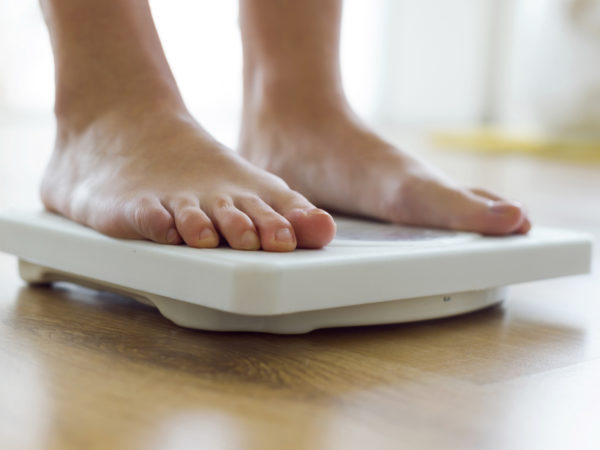Can Chemicals Cause Weight Gain?
I’m told that some chemicals in the environment can cause weight gain, especially in women. Can you tell me anything about this?
Andrew Weil, M.D. | April 19, 2018

You may be referring to results of a study showing that perfluoroalkyl substances (PFASs) – water- and oil- repellant compounds – may be to blame for weight regain in individuals who have successfully lost weight. These chemicals are used in the manufacture of food wrappers, waterproof clothing, pots and pans, furniture fabrics and carpeting. They can be found in the blood of most people living in the U.S.
PFASs have been around for more than 60 years and have been linked to cancer, hormone disruption, immune dysfunction, high cholesterol and obesity in the U.S. and other developed countries. They are called “obesogens” because they’re known to upset body weight regulation and are associated with a lower resting metabolic rate after weight loss. Those affected burn fewer calories during normal activities.
Researchers from the Harvard T.H. Chan School of Public Health and Louisiana State and Tulane Universities investigated the connection between PFASs and weight by analyzing data from 621 overweight and obese adults ages 30 to 70 who took part in a two-year trial of four heart-healthy diets. The researchers determined the levels of PFASs in each participant’s blood at the outset of the study and monitored weight loss or gain over time. During the first six months of the diet, participants lost an average of 14 pounds and then regained about six pounds over the following 18 months. Those who regained the most weight were women who had the highest blood levels of PFASs. On average, these women put back four to five pounds more than women with the lowest blood levels of PFASs.
While the study didn’t prove cause and effect, this finding suggests that these chemicals play a role in weight maintenance. Higher blood concentrations of PFASs were significantly associated with lower resting metabolic rates.
Research leader, Qi Sun, an assistant professor of nutrition at the Harvard Chan School of Public Health, says that one way PFASs may affect weight is by altering the function of estrogen, which plays a role in regulation of body weight and metabolism.
In addition to the products mentioned above, the U.S. Centers for Disease Control and Prevention (CDC) notes that PFASs may be found in microwave popcorn bags, pizza boxes and candy wrappers, nonstick cookware, cleaning products, shampoos, dental floss, nail polish, eye makeup, paints, varnishes and sealants. You can also be exposed to PFASs by drinking contaminated municipal or private well water or by eating fish from contaminated water. (Showering, bathing or washing dishes in water containing perfluoroalkyl substances or PFASs shouldn’t increase exposure, however.) If you’re concerned about any of the products you use, call the Consumer Product Safety Commission at (800) 638-2772.
Andrew Weil, M.D.
Source:
Qi Sun et al, “Perfluoroalkyl substances and changes in body weight and resting metabolic rate in response to weight-loss diets: A prospective study.” PLOS Medicine, February 13, 2018, doi.org/10.1371/journal.pmed.1002502












